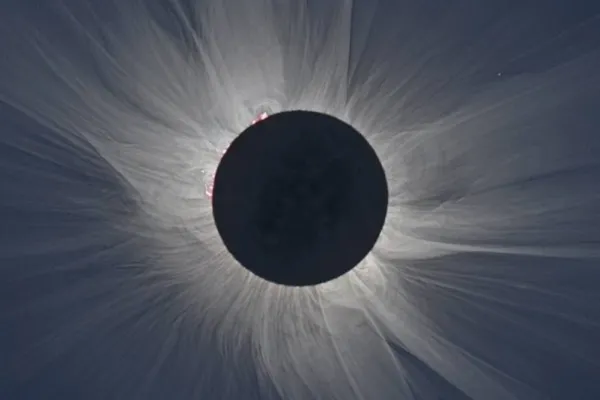The “Astronomical Super Bowl”: How to Watch
Research & Inquiry

Published July 28, 2017
“It’s the astronomical Super Bowl!” says astronomy technician Meg Thacher. “It’s the Oscars of the astronomical world!”
Thacher is talking about the August 21 solar eclipse—the first time in nearly 40 years that astronomy fans in the continental United States will have an opportunity to watch the sun fully disappear behind the moon. “It’s a magical effect,” Thacher says. “We are so lucky to be able to see this.”
When the event occurs (in Northampton, it will start at 1:25 p.m. Monday, August 21) Thacher and several other Smith astronomers will be in the path of totality—that is, in locations that will allow them to see the sun completely obscured by the moon. Thacher—who’s been planning her experience for nearly two years—will be at a location in Oregon, carefully chosen in part for the likelihood of clear skies.
But you don’t have travel to the path of totality to experience this rare and wonderful event. You’ll be able to see, hear and marvel at the effects everywhere in the U.S. Here are some tips from Thacher on how to have the fullest eclipse experience, no matter where you are.
Where should I watch?
If you live within two to three hours of the path of totality, you should go! Totality allows you to see things that others won’t be able to see. For example, if you’re the path of totality you’ll be able to see the corona—the glowing halo around the black circle of the moon. Totality also allows you to see shadow bands—“snakes” of dark and light moving across the ground. And if you’re in the path of totality, you’ll be able to see a 360-degree sunrise and sunset, with the stars and planets in the daytime sky.
I can’t get to totality. Will my eclipse experience be a bust?
Not at all! You can watch the eclipse from wherever you are!
What will I see if I’m not in the path of totality?
What you’ll see depends in part on where you are. The sun will be 65 percent covered by the moon in Northampton. So here at Smith, you’ll see crescent-shaped shadows on the ground, as the eclipse is filtered through the leaves of the trees. And you can watch through a pinhole camera—or through special eclipse eyeglasses—to see the shadow of the sun partially obscured by the moon.
Where can I get more information about the eclipse? And where can I get some of those cool eclipse eyeglasses?
I’ll be offering public talks about the eclipse at 7 p.m. Monday, August 7, at the Forbes Library in Northampton and at 6 p.m. Tuesday, August 8, at the West Springfield Public Library. I’ll have lots more information about the eclipse—and I’ll have eyeglasses, too!
What online resources are available?
NASA has created a special website for the eclipse, with maps, photos and other great information. And there are some cool citizen science projects online: Citizen CATE aims to capture images of the corona, and Project Megamovie will gather video clips from across the country to create a continuous, 90-minute movie of the eclipse across the path of totality.
The eclipse is cool! How can I learn more about astronomy?
Smith hosts public stargazing events on the McConnell rooftop every few weeks. More information is online.
This NASA photo showing a total solar eclipse in March, 2015 was taken at Svalbard, Norway. Another solar eclipse will occur on August 21.